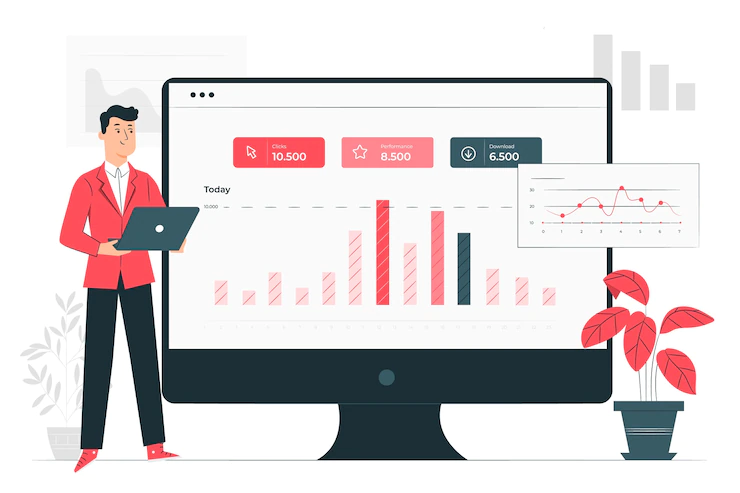4 Case Studies of Successful Reader Revenue Strategies for Publishers
As a publisher, the ultimate goal is to provide readers with high-quality journalism and create an experience that is worthy of their investment. Although advertising can be a revenue source, reader revenue has become the primary source of income for publishers who employ the right tactics. To achieve this, it is essential to ensure that our journalism aligns with the needs of our audience and that we meet their expectations.
According to McKinley Hyden, Head of Insights at Financial Times, "The number one question that journalists wanted answering after our North Star goal of the engagement was introduced, which page views couldn't answer, was: what do subscribers actually think, and are they really reading?" This statement underlines the importance of understanding readers' needs and preferences to ensure they remain engaged and loyal.
This article will examine four successful publishers and how they have leveraged reader revenue to achieve growth. While there are different tactics to generate income from readers, studying the successes of these publishers can provide valuable insights into how we can build a sustainable business model that caters to our audience's interests.
1. New York Times
New York Times is a New York-based publishing company with over 8.6 million digital subscribers worldwide and is known as one of the best news publishing companies worldwide.
The New York Times has managed to grab users' attention and generate income primarily due to the proper utilization of the meter strategies, paywall models, and meter stop rates. When a new user first goes to their site, he or she can read a fixed number of articles 1 (approximately 20) for free, after which they must pay.
“The company’s paywall strategy revolves around the concept of the subscription funnel. At the top of the funnel are unregistered users who do not yet have an account with The Times. Once they hit the meter limit for their unregistered status, they are shown a registration wall that blocks access and asks them to make an account with us or to log in if they already have one. Doing this gives them access to more free content. Since their activity is now linked to their registration ID, it allows us to better understand their current appetite for Times content.” – Rohit Supekar, NYT Open.
While this is a common strategy among various news publishing sites, New York Times’ quality journalism can convince users to pay to get access to more articles. So, we must also keep an eye on making sure that we are making high-quality articles.
This model has been implemented since 2011 and acts as this publisher's primary source of income. They have two different subscription models – a digital-only subscription and a subscription where users get digital and printed media.
They also use machine learning 2 to make smarter paywalls and provide personalized recommendations to keep their content engaging and create loyal customers.
2. The Guardian
The Guardian is a British publishing house that was founded in 1821. Guardian recently released their financial results for 2021-22, which were outstanding.
With more than a million digital supporters in a year, Guardian has increased their total revenue by 13% 3 and their digital revenue by over 10%.
Guardian’s primary revenue is generated by implementing a business model where their readers support them. By focusing a lot on quality journalism and operational management, they ask their readers to contribute to funding their journalism.
Readers can make a one-time donation or regularly contribute to help them provide quality content. Readers can also become members of The Guardian, to get access to exclusive content and offers.
This has been a very successful model for them, and Guardian has established itself as a sustainable platform to make strategic investments to improve its reach and revenue.
“This very positive set of results represents the culmination of several years’ hard work and is thanks to the efforts and innovation of all my colleagues at the Guardian and the Observer” – Charles Gurassa, Guardian Media Group Chairman
3. Financial Times
Financial Times is another British publishing house specialising mainly in business and current economic offers. Initially with zero digital presence, by 2019, Financial Times had over a million paid subscribers 4
Their secret to success is a paid subscription model where customers get an in-depth analysis of current economic affairs and access exclusive content. Since they are one of the best publishers in their field, customers only think twice before buying their subscriptions.
Financial Times has different offers and subscription packages for individual and organizational use. They offer different packages by looking at an individual’s activities and determining who would be willing to move from a trial to paid subscription. They use the RFV formula to segment their customers.
- Recency: The last time a potential customer has consumed their content
- Frequency: How many times has the user consumed content
- Volume: How much content does the user consume at a time
“We began to analyze the data we had access to within the organization. As we built models - whether they were to optimize customer acquisition or retention - one driver was consistently more significant than any other: usage. Once we discovered this relationship, it seemed obvious. Usage directly correlates with customer value and is a great predictor of subscription renewal. This created a great story for our editorial teams too: consumption of journalism directly related to business success” – Tom Betts, Chief Data Officer, Financial Times
4. Le Monde
Le Monde is a French publishing company that generated 40 million euros in 2021 and had close to 45 million visits during the presidential election 5
They have implemented the concept of a metered paywall model flawlessly. We can access a certain number of articles for free before moving to a paid subscription.
Like New York Times, Le Monde has two different subscription models for digital-only and digital and print articles.
Le Monde has generated massive revenue thanks to this paywall and owns 85% of Buzzfeed’s Le HuffPost website, which recorded nearly 35 million monthly visits with an editorial staff of only 35 journalists. Plus, despite being a French newspaper, their digital articles are visited by people from all over the world thanks to the quality of their journalism.
Takeaway
These four publishers have leveraged reader revenue to build a sustainable business model. They have built a loyal reader base by focusing on quality journalism, offering exclusive content, and providing a unique perspective on news. By studying their success, online publishers can learn valuable insights into building a sustainable business model that caters to their audience's interests.
This article highlights the importance of understanding the readers' needs and preferences and leveraging reader revenue to build a sustainable business model. By doing so, media organizations can provide high-quality journalism and create an experience worthy of their readers' investment.
For assembling the experience that make the model successful, personalization plays a key role. The right message to the right user at the right time is something that can make an impact on any revenue generation activity. For that, website personalization helps to deliver the message based on the user's behaviour on the portal.



